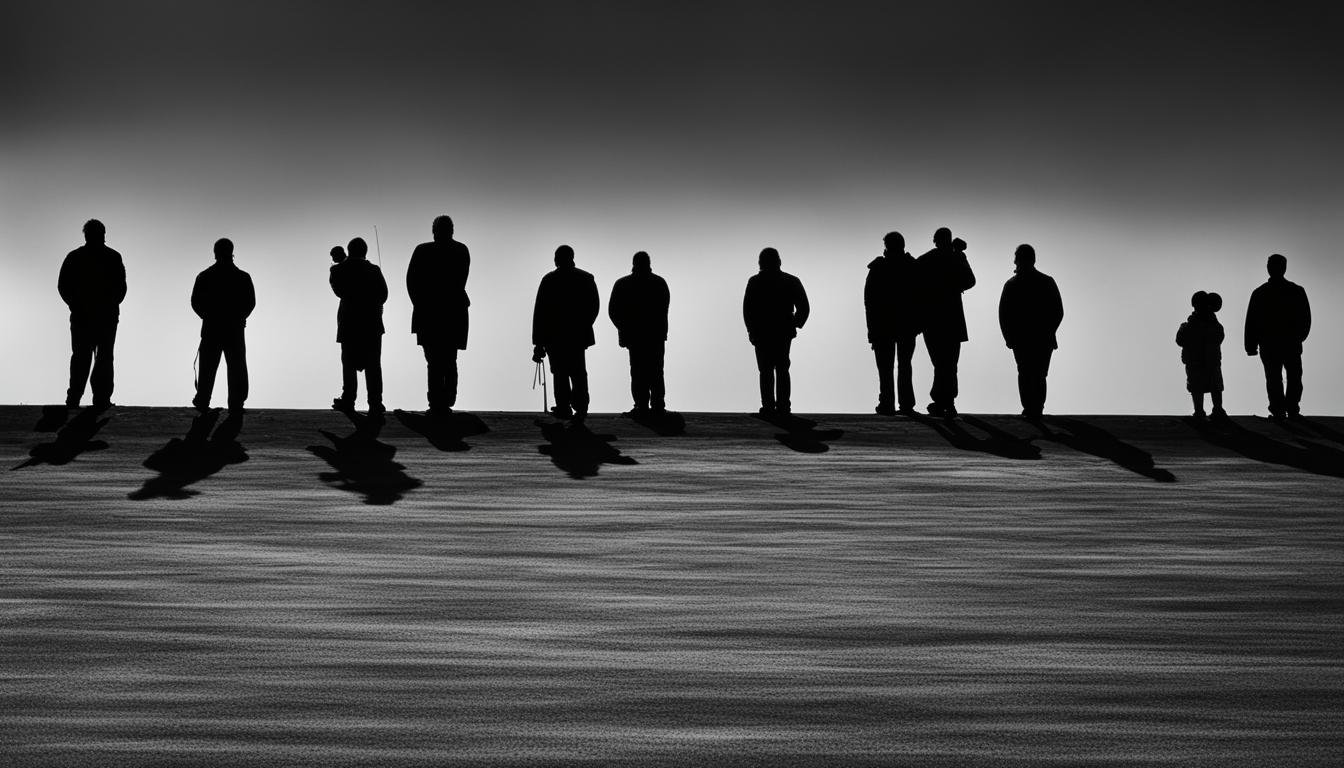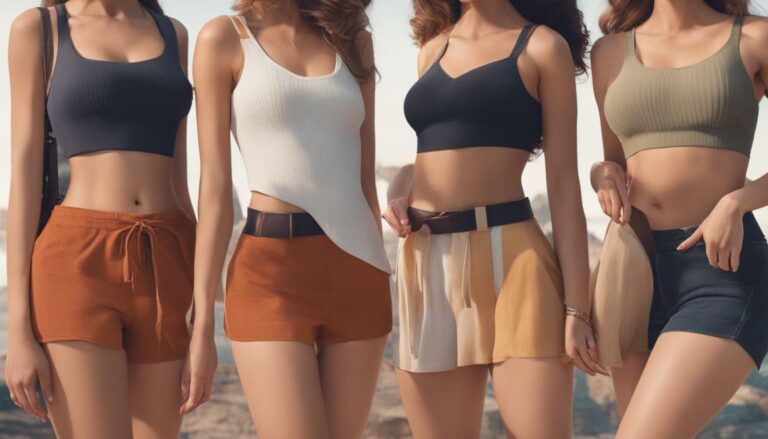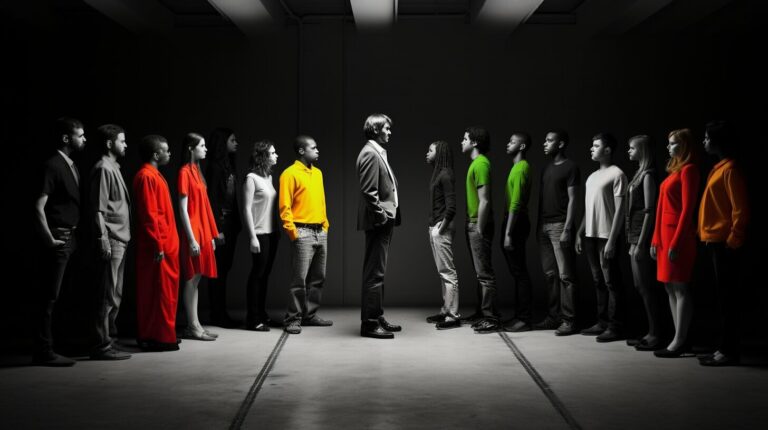How tall are dramatic body types?
When it comes to dramatic body types, height can play a significant role in defining this unique category. While the height of individuals with dramatic body types can vary, there are some general characteristics that can help us understand their tallness and how it correlates with this specific body type.
According to sources, dramatic body types tend to be on the taller side. Some sources mention that dramatic body types can be under 5.5ft, characterized by a short vertical line. However, other sources explain that some dramatic body types can be taller, as they have a dominant vertical.
It’s important to note that height classification for dramatic body types is influenced by the balance between yin (soft, rounded) and yang (angular, structured) features. The height of an individual can affect this balance and contribute to their classification as a dramatic body type.
Key Takeaways:
- Dramatic body types tend to be on the taller side.
- Height plays a role in the classification of body types, affecting the balance between yin and yang.
- There can be variations in the height range for dramatic body types.
- The correlation between tallness and the dramatic body type is influenced by a dominant vertical.
- It is important to consider both height and physical features when classifying body types.
Understanding the Kibbe Body Type System
The Kibbe Body Type System, developed by David Kibbe, is a comprehensive approach to embracing and celebrating your natural body shape. By taking into account both your skeletal system and flesh, this system determines your unique body type, helping you understand and appreciate your silhouette.
At its core, the Kibbe Body Type System is based on the concept of balance between yin and yang. Yin represents softness, roundness, and curves, while yang represents angularity, structure, and sharpness. By considering the interplay of these two elements, the system classifies individuals into distinct categories, including dramatic, natural, classic, gamine, and romantic.
The main goal of the Kibbe Body Type System is to encourage individuals to dress in a way that harmonizes with their unique body shape, rather than adhering to trends or societal expectations. By understanding your body type, you can gain insights into the most flattering clothing silhouettes, styles, and accessories that enhance your natural features and showcase your personal style.
Embracing the Kibbe Body Type System allows you to fully appreciate your body’s attributes and embrace your individuality. Rather than striving for an idealized body shape, this system emphasizes the beauty and diversity of different body types.
“The Kibbe Body Type System helps you celebrate your unique body shape and understand how to dress in a way that highlights your natural beauty. It’s all about embracing your individuality and finding what makes you feel confident and empowered.”
By utilizing the Kibbe Body Type System, you can unlock a new level of self-expression and confidence in your personal style. Instead of focusing on unrealistic beauty standards, this system empowers you to embrace your body just as it is and make fashion choices that enhance your natural features.
Height and Kibbe Body Types
When it comes to the Kibbe Body Type System, height plays a significant role in determining the appropriate Image ID. Different body types have specific height limitations to consider, ensuring the balance between yin and yang is maintained. Let’s explore how height factors into the classification of Kibbe Body Types.
Firstly, it’s important to note that certain body types, including R, TR, SG, FG, and SC, have height limitations that tend to top out around 5’5″ (or 5’6″ for SC). These body types require a balance of yin and yang, and being taller can result in an imbalance of length and lack of compactness. As a result, these body types are typically better suited for individuals under the specified height range.
Conversely, taller women automatically have a dominant vertical and often fall into the categories of Dramatic, Soft Dramatic, or Flamboyant Natural. These body types embrace height and use it to their advantage, as a taller stature enhances their angular and structured features.
It’s essential to understand that height is not relative to one’s surroundings or ethnicity. It does not change based on location or cultural norms. Instead, height is a defining characteristic that influences the classification within the Kibbe Body Type System, highlighting the unique balance of yin and yang in an individual’s body shape.
Height Limitations for Kibbe Body Types
| Body Type | Height Limitations |
|---|---|
| Romantic (R) | Under 5’5″ (165 cm) |
| Theatrical Romantic (TR) | Under 5’5″ (165 cm) |
| Soft Gamine (SG) | Under 5’5″ (165 cm) |
| Flamboyant Gamine (FG) | Under 5’5″ (165 cm) |
| Soft Classic (SC) | Under 5’6″ (168 cm) |
As seen in the table above, these body types have specific height limitations to ensure the desired balance and proportionality are achieved. However, it is crucial to remember that height is just one factor among many in determining the appropriate Image ID. Individual bone structure, body flesh, and facial features also contribute to the overall classification.
By understanding the relationship between height and Kibbe Body Types, individuals can embrace their natural body shape and dress in a way that harmonizes with their unique attributes, promoting self-confidence and personal style.
The Influence of Celebrities on Height Perception
When it comes to determining height ranges in Kibbe Body Types, it is essential to differentiate between real people and celebrities. While celebrities can serve as inspiration for fashion and style ideas, they should not be considered as reliable data points for determining height correlations in the Kibbe Body Type System.
Celebrities often have access to teams of stylists, personal trainers, and image consultants who work tirelessly to enhance their appearance and create a specific image. These professionals can use various techniques and modifications to alter a celebrity’s natural body shape, which can distort perceptions of their true height.
Therefore, it is crucial to rely on the expertise of David Kibbe, the creator of the Kibbe Body Type System. His evaluations and classifications are based on a comprehensive understanding of an individual’s unique skeletal structure, flesh, and overall body proportions.
“It is best to rely on David Kibbe’s own words and evaluations of individuals rather than comparing them to celebrities. Each person is unique, and the focus should be on embracing their natural body shape and finding clothing that enhances their individuality and personal style.”
The Case of Rihanna’s Height in TR
A common example of the influence of celebrities on height perception is Rihanna’s classification within the Kibbe Body Type System. Based on her naturally striking appearance and dominant vertical line, there have been claims that she falls into the Theatrical Romantic (TR) category.
However, it is important to approach such claims with caution. While Rihanna’s height is often listed as 5’8″ (173 cm), the truth is that her exact height has never been officially confirmed by reliable sources. Moreover, even if she were indeed 5’8″, it is not a determining factor in classifying her within the TR category.
David Kibbe evaluates individuals holistically, taking into account a variety of factors such as bone structure, flesh, facial features, and proportions. Height is just one piece of the puzzle and should not be given undue weight when assessing body types.
The focus of the Kibbe Body Type System is on harmonizing and balancing the yin and yang elements within an individual’s body shape. The ultimate goal is to highlight and celebrate the unique beauty and style of each person, rather than using celebrities as a benchmark for height classifications.
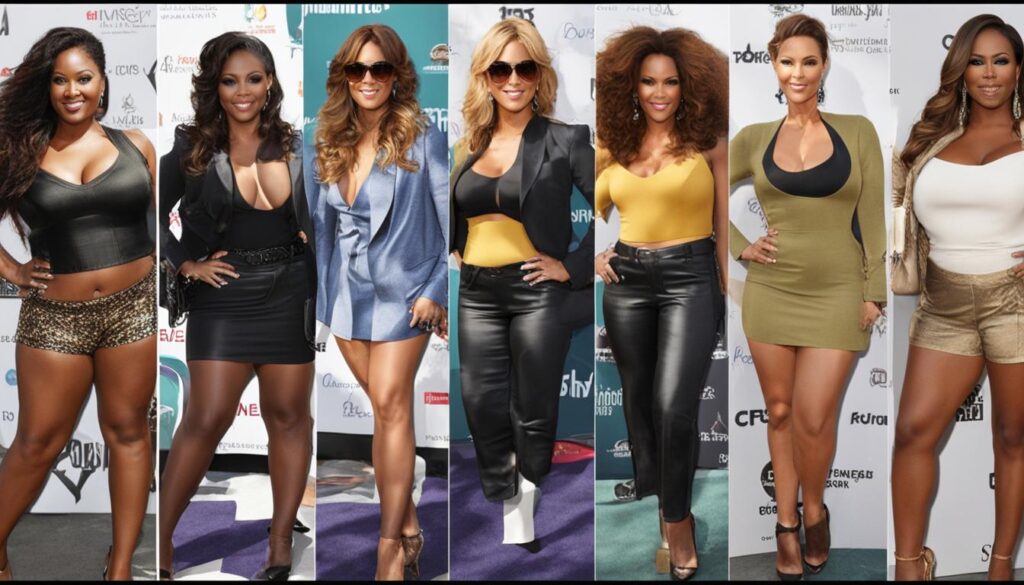
| Celebrity | Height (listed) | Kibbe Body Type Classification |
|---|---|---|
| Rihanna | 5’8″ (173 cm) | Claims of Theatrical Romantic (TR) |
| Beyoncé | 5’7″ (170 cm) | Claims of Soft Dramatic (SD) |
| Zendaya | 5’10” (178 cm) | Claims of Flamboyant Natural (FN) |
This table showcases how celebrities’ heights and their corresponding Kibbe Body Type classifications can vary based on unofficial sources and assumptions. It further reinforces the importance of relying on David Kibbe’s expertise and evaluations when determining body types rather than celebrity comparisons.
Height and Image IDs
In the world of Kibbe Body Types, height plays a significant role in determining the appropriate Image ID. While there are general guidelines for height limitations within each Image ID, it’s important to understand that there can be variations and exceptions.
Some shorter women may find themselves falling into taller Image IDs. This is because even though they may be shorter in stature, they still have a vertical component that needs to be considered when it comes to dressing and styling. In these cases, their height doesn’t necessarily align with the typical expectations of their Image ID, but other factors such as bone structure, body flesh, and facial features come into play.
On the other hand, taller women are limited to three Image IDs: Dramatic, Soft Dramatic, and Flamboyant Natural. This is because their dominant vertical automatically places them in these categories. Height variations within these Image IDs are still possible, but the dominant vertical serves as the defining factor.
It’s important to remember that height is just one aspect of the overall assessment process when determining the appropriate Image ID. Other factors such as bone structure, body flesh, and facial features all contribute to the final classification. By considering the harmony between yin and yang and embracing one’s true body shape, individuals can confidently dress and express their unique style.
| Image ID | Height Limitations |
|---|---|
| Dramatic | None |
| Soft Dramatic | None |
| Flamboyant Natural | None |
| Natural | None |
| Classic | None |
| Gamine | None |
| Romantic | None |
| Dramatic Classic | Under 5’6″ |
| Soft Classic | Under 5’6″ |
| Flamboyant Gamine | Under 5’5″ |
| Soft Gamine | Under 5’5″ |
| Theatrical Romantic | Under 5’5″ |
| Flamboyant Dramatic | Over 5’5″ |
| Soft Natural | Over 5’5″ |
| Romantic Classic | Over 5’6″ |
| Flamboyant Gamine (D) | Over 5’5″ |
As we can see from the table, some Image IDs have specific height limitations, while others do not. This underlines the flexibility and individuality of the Kibbe Body Type system, allowing for exceptions and variations within the framework.
Cultural and Ethnic Height Variations
When it comes to height, cultural norms and ethnic backgrounds do not influence the natural stature of an individual. The Kibbe Body Type System is designed to assess individuals as unique entities, unswayed by external cultural or ethnic norms. While certain cultures may have a higher average height, this does not impact the classification of Kibbe Body Types.
The Kibbe Body Type System’s primary focus is on the balance of yin and yang and how it manifests in each individual’s body shape. This emphasis on the interplay between these two forces ensures that height is not a determinant in the classification process. Regardless of cultural or ethnic factors, the system remains steadfast in its evaluation of an individual’s body shape.
To emphasize the lack of correlation between height and cultural or ethnic norms, let’s consider a hypothetical scenario:
Imagine two individuals with the same Kibbe Body Type, but from different cultural backgrounds. Despite the potential disparity in their respective cultures’ average height, their Kibbe Body Type classification would remain the same. The focus is solely on their unique body shape and the yin-yang balance it exhibits.
| Culture | Average Height (Feet) |
|---|---|
| Country A | 5’7″ |
| Country B | 5’2″ |
As shown in the table above, the average height in Country A is taller compared to Country B. However, this difference does not affect the Kibbe Body Type classification. The classification considers the individual’s body shape, bone structure, and other physical characteristics, as specified by the Kibbe Body Type System.
In summary, height variations in different cultures and ethnicities do not influence the classification of Kibbe Body Types. The Kibbe Body Type System focuses on assessing individuals as unique individuals, independent of external factors, placing importance on the balance of yin and yang in one’s body shape.
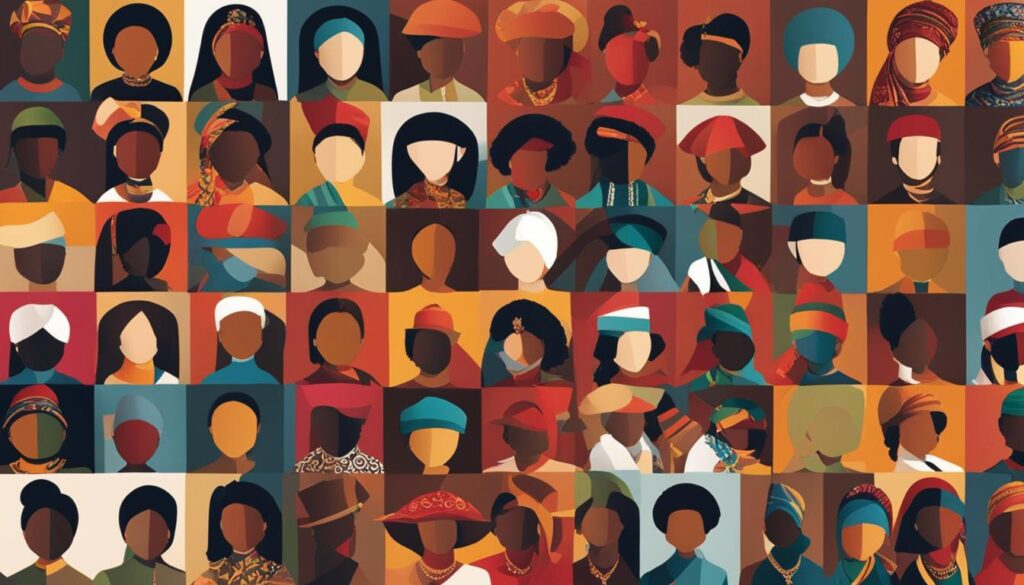
Conclusion
In conclusion, height is a significant factor when it comes to the Kibbe Body Type System. The height of an individual influences the balance between yin and yang, which is crucial in determining their body shape classification. While there are general guidelines and limitations for height within each Image ID, it is important to note that variations and exceptions exist.
It is essential to understand that height is just one aspect considered in determining the appropriate Image ID. Factors such as bone structure, body flesh, and facial features also contribute to the overall classification. The focus of the Kibbe Body Type System is on embracing one’s natural body shape and dressing accordingly, highlighting individual style and harmony with one’s unique attributes.
In summary, height plays an integral role in the Kibbe Body Type System. It affects the balance of yin and yang, and while there are some height correlations within each Image ID, it is not the sole determiner. The system encourages individuals to recognize and appreciate their natural body shape, emphasizing the importance of finding clothing styles that complement their unique silhouette and express their individuality.
FAQ
How tall are dramatic body types?
The height of dramatic body types can vary, but they tend to be on the taller side.
What is the Kibbe Body Type System?
The Kibbe Body Type System, created by David Kibbe, is a system that focuses on embracing your natural body shape and determining your body type based on the balance between yin and yang.
How does height affect Kibbe Body Types?
Height plays a significant role in the classification of Kibbe Body Types. Some body types have height limitations, while taller women automatically fall into certain categories.
Do celebrities’ heights affect Kibbe Body Types?
While celebrities can serve as inspiration, their heights should not be considered as data points for determining height ranges in Kibbe Body Types. It is important to rely on David Kibbe’s own evaluations of individuals instead.
Are there exceptions to height limitations in Kibbe Body Types?
Yes, there can be variations and exceptions to height limitations within each Image ID. Some shorter women may fall into taller Image IDs due to their unique body characteristics.
Does height change based on cultural or ethnic backgrounds?
No, height does not change based on cultural or ethnic norms. The Kibbe Body Type System assesses individuals as unique individuals, regardless of external factors.
